I have a Java Spring boot application that just reads the secret from Azure Key Vault, below are steps used
- Created an Application Registration
- Copied the App Registration details
- Generated Secret
- Granted access on Azure Key Vault
and below is my Java Spring Boot application
pom.xml
<?xml version="1.0" encoding="UTF-8"?>
<project xmlns="http://maven.apache.org/POM/4.0.0" xmlns:xsi="http://www.w3.org/2001/XMLSchema-instance"
xsi:schemaLocation="http://maven.apache.org/POM/4.0.0 https://maven.apache.org/xsd/maven-4.0.0.xsd">
<modelVersion>4.0.0</modelVersion>
<parent>
<groupId>org.springframework.boot</groupId>
<artifactId>spring-boot-starter-parent</artifactId>
<version>2.3.6.RELEASE</version>
<relativePath/> <!-- lookup parent from repository -->
</parent>
<groupId>com.contoso</groupId>
<artifactId>keyvault</artifactId>
<version>0.0.1-SNAPSHOT</version>
<name>keyvault</name>
<description>Demo project for Spring Boot</description>
<properties>
<java.version>11</java.version>
<azure.version>2.3.5</azure.version>
</properties>
<dependencies>
<dependency>
<groupId>org.springframework.boot</groupId>
<artifactId>spring-boot-starter-web</artifactId>
</dependency>
<dependency>
<groupId>com.microsoft.azure</groupId>
<artifactId>azure-keyvault-secrets-spring-boot-starter</artifactId>
</dependency>
<dependency>
<groupId>org.springframework.boot</groupId>
<artifactId>spring-boot-starter-test</artifactId>
<scope>test</scope>
<exclusions>
<exclusion>
<groupId>org.junit.vintage</groupId>
<artifactId>junit-vintage-engine</artifactId>
</exclusion>
</exclusions>
</dependency>
</dependencies>
<dependencyManagement>
<dependencies>
<dependency>
<groupId>com.microsoft.azure</groupId>
<artifactId>azure-spring-boot-bom</artifactId>
<version>${azure.version}</version>
<type>pom</type>
<scope>import</scope>
</dependency>
</dependencies>
</dependencyManagement>
<build>
<plugins>
<plugin>
<groupId>org.springframework.boot</groupId>
<artifactId>spring-boot-maven-plugin</artifactId>
</plugin>
</plugins>
</build>
</project>
application.properties
azure.keyvault.client-id=7a111923-xxxxxxxx-xxxxxx-31be31d233dd
azure.keyvault.client-key=gt_~k02yF_xxxxxx_vn3r1.GW
azure.keyvault.enabled=true
azure.keyvault.tenant-id=9cef136a-xxxx-xxxx-b7d3-d9d8a5a84182
azure.keyvault.uri=https://contosokvxxx.vault.azure.net/
KeyvaultApplication.java
package com.example.demo;
import org.springframework.boot.SpringApplication;
import org.springframework.boot.autoconfigure.SpringBootApplication;
import org.springframework.web.bind.annotation.GetMapping;
import org.springframework.web.bind.annotation.RestController;
import org.springframework.beans.factory.annotation.Value;
@SpringBootApplication
@RestController
public class KeyvaultApplication {
public static void main(String[] args) {
SpringApplication.run(KeyvaultApplication.class, args);
}
@GetMapping("get")
public String get() {
return connectionString;
}
@Value("${connectionString}")
private String connectionString;
public void run(String... varl) throws Exception {
System.out.println(String.format("\nConnection String stored in Azure Key Vault:\n%s\n",connectionString));
}
}
It works and I could read the Secret from Azure Key Vault
so decided to remove the secrets from the application.properties and commented as below
#azure.keyvault.client-id=7a111923-1xxxxxxxx-31be31d233dd
#azure.keyvault.client-key=gt_~k02yF_xxxxxxxx-Hr6vn3r1.GW
azure.keyvault.enabled=true
#azure.keyvault.tenant-id=9cef136axxxxxxx-3-d9d8a5a84182
azure.keyvault.uri=https://contosokvxxx.vault.azure.net/
and added an Environment variable as shown below using setx
setx AzureServicesAuthConnectionString "RunAs=App;AppId=bb01c08b-xxxxxxxx-106;TenantId=9cef1-xxxxxxx-d9d8a5a84182;AppKey=xxxxxxxx-4Dpg-E3zrj~"
The project compiles without any isssues
>mvn clean compile package
but failed running
>mvn spring-boot:run
Error:
11:40:27.334 [main] ERROR org.springframework.boot.SpringApplication - Application run failed
java.lang.IllegalStateException: Failed to configure KeyVault property source
at com.microsoft.azure.keyvault.spring.KeyVaultEnvironmentPostProcessorHelper.addKeyVaultPropertySource(KeyVaultEnvironmentPostProcessorHelper.java:110)
at com.microsoft.azure.keyvault.spring.KeyVaultEnvironmentPostProcessor.postProcessEnvironment(KeyVaultEnvironmentPostProcessor.java:47)
Caused by: java.lang.RuntimeException: Max retries 3 times exceeded. Error Details: ManagedIdentityCredential authentication unavailable. Connection to IMDS endpoint cannot be established, Network is unreachable: no further information.
at com.azure.core.http.policy.RetryPolicy.lambda$attemptAsync$1(RetryPolicy.java:116)
at reactor.core.publisher.FluxOnErrorResume$ResumeSubscriber.onError(FluxOnErrorResume.java:88)




